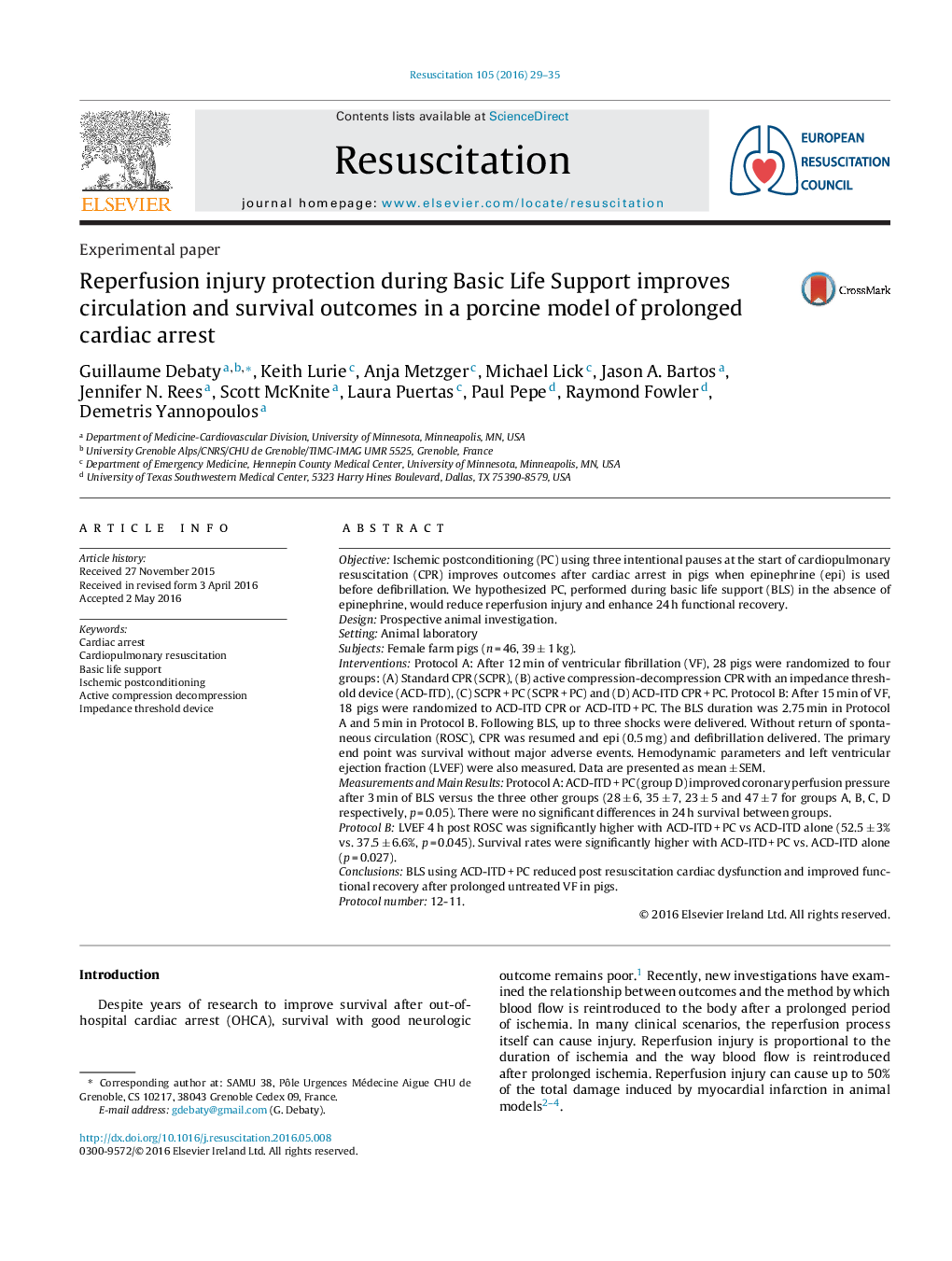| کد مقاله | کد نشریه | سال انتشار | مقاله انگلیسی | نسخه تمام متن |
|---|---|---|---|---|
| 5997195 | 1578979 | 2016 | 7 صفحه PDF | دانلود رایگان |
ObjectiveIschemic postconditioning (PC) using three intentional pauses at the start of cardiopulmonary resuscitation (CPR) improves outcomes after cardiac arrest in pigs when epinephrine (epi) is used before defibrillation. We hypothesized PC, performed during basic life support (BLS) in the absence of epinephrine, would reduce reperfusion injury and enhance 24 h functional recovery.DesignProspective animal investigation.SettingAnimal laboratorySubjectsFemale farm pigs (n = 46, 39 ± 1 kg).InterventionsProtocol A: After 12 min of ventricular fibrillation (VF), 28 pigs were randomized to four groups: (A) Standard CPR (SCPR), (B) active compression-decompression CPR with an impedance threshold device (ACD-ITD), (C) SCPR + PC (SCPR + PC) and (D) ACD-ITD CPR + PC. Protocol B: After 15 min of VF, 18 pigs were randomized to ACD-ITD CPR or ACD-ITD + PC. The BLS duration was 2.75 min in Protocol A and 5 min in Protocol B. Following BLS, up to three shocks were delivered. Without return of spontaneous circulation (ROSC), CPR was resumed and epi (0.5 mg) and defibrillation delivered. The primary end point was survival without major adverse events. Hemodynamic parameters and left ventricular ejection fraction (LVEF) were also measured. Data are presented as mean ± SEM.Measurements and Main ResultsProtocol A: ACD-ITD + PC (group D) improved coronary perfusion pressure after 3 min of BLS versus the three other groups (28 ± 6, 35 ± 7, 23 ± 5 and 47 ± 7 for groups A, B, C, D respectively, p = 0.05). There were no significant differences in 24 h survival between groups.Protocol BLVEF 4 h post ROSC was significantly higher with ACD-ITD + PC vs ACD-ITD alone (52.5 ± 3% vs. 37.5 ± 6.6%, p = 0.045). Survival rates were significantly higher with ACD-ITD + PC vs. ACD-ITD alone (p = 0.027).ConclusionsBLS using ACD-ITD + PC reduced post resuscitation cardiac dysfunction and improved functional recovery after prolonged untreated VF in pigs.Protocol number12-11.
Journal: Resuscitation - Volume 105, August 2016, Pages 29-35
